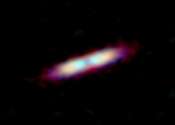JWST searches for planets in the Fomalhaut system
The Fomalhaut system is nearby in astronomical terms, and it's also one of the brightest stars in the night sky. That means astronomers have studied it intensely over the years. Now that we have the powerful James Webb Space ...









